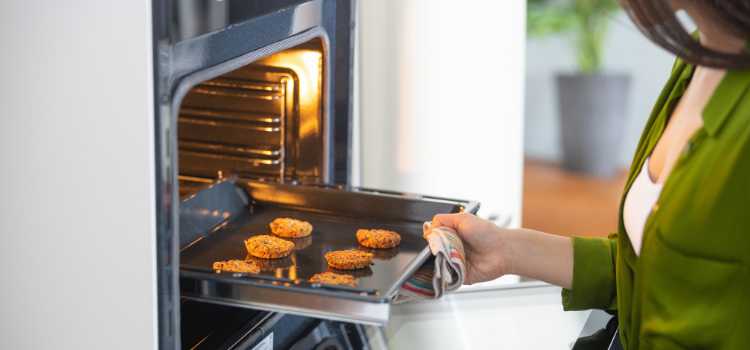As an Amazon Associate, I earn from qualifying purchases

In today’s fast-paced world, kitchen appliances that save time and offer versatility are highly valued. Microwave convection ovens are one such appliance, combining the speed of microwave cooking with the even heating of convection cooking. This dual functionality allows for efficient cooking, baking, and reheating.
However, the question many users have is whether metal can be safely used in a microwave convection oven. This article explores this query by delving into the properties of metal, its interaction with microwave energy, and guidelines for safe use.
Understanding Microwave Convection Ovens
Microwave convection ovens are engineered to provide the best of both microwave and convection technologies. In microwave mode, they use electromagnetic waves to heat food quickly by agitating water molecules.
Conversely, convection cooking circulates hot air around the food, ensuring even cooking and browning. This combination allows for more versatile cooking methods, such as roasting, grilling, and baking, beyond what a standard microwave can achieve.
The ability to switch between or combine these modes makes microwave convection ovens a popular choice for those looking to save space without compromising on functionality. Yet, with this advanced functionality comes the need to understand how different materials interact with these cooking modes, especially metal.
Properties of Metal
Metal is known for its durability, conductivity, and reflective capabilities. These properties make it a staple in traditional ovens and stovetops. However, when it comes to microwaves, metal can behave unpredictably.
- Reflective Nature: Metal reflects microwaves, which can cause sparks if the metal is placed improperly or if it has sharp edges. This is because the microwaves bounce off the metal surfaces and, if not absorbed by food, can concentrate in certain areas, leading to sparking.
- Interaction with Microwave Energy: When metal is exposed to microwave energy, it doesn’t absorb the waves like food does. Instead, it reflects them, which can result in uneven cooking and potential damage to the microwave itself.
Potential Risks and Safety Concerns
The use of metal in a microwave convection oven can lead to several issues:
- Sparking and Fire Hazards: If metal is placed incorrectly, or if it’s too close to the microwave walls, it can cause arcing—sparks generated by the electricity bouncing between the metal and other parts of the oven. Persistent arcing can cause fires or damage the oven.
- Damage to the Appliance: Continuous exposure to sparks can damage the interior of the oven, including the protective coating and the magnetron, which generates the microwave radiation.
- Safety Concerns: The risk of starting a fire or damaging the appliance makes it crucial to understand when and how metal can be safely used, if at all.
Guidelines for Safe Use of Metal

While metal use in microwave mode is generally discouraged, there are specific conditions under which it can be safe in convection mode:
- Safe Types of Metal: Some microwave convection ovens come with metal racks designed specifically for convection mode. These are usually safe to use as they are engineered to withstand microwave energy without sparking.
- Convection Mode Only: Metal can typically be used in convection mode alone, where the microwaves are not active. Check if your oven allows for separate convection-only cooking and ensure metal is placed in the oven only when this mode is active.
- Manufacturer Guidelines: Always refer to the appliance’s manual for specific advice regarding metal use. Manufacturers often provide a list of safe practices and materials that can be used in their ovens.
- Avoid Sharp Edges and Thin Metal: Thin foil and items with sharp edges shouldn’t be used even in convection mode, as they can still cause issues if the microwave setting is accidentally activated.
Conclusion
Using metal in a microwave convection oven requires careful consideration and adherence to safety guidelines. While the convection mode may permit some use of metal, it is crucial to follow manufacturer instructions and remain vigilant about potential risks. Remember to prioritize safety by understanding your appliance’s capabilities and limitations.
By respecting these guidelines, users can enjoy the full benefits of their microwave convection ovens, achieving efficient and versatile cooking without compromising safety. Always stay informed and cautious to make the most of this modern kitchen marvel.
FAQ
What can you not put in a convection microwave?
Avoid using regular paper, plastic, and some types of metal in a convection microwave. Items like plastic containers and paper can melt or catch fire, while improper metal use may cause sparking. Always consult the appliance manual for approved materials and safety guidelines.
What kind of pans can you use in a convection microwave oven?
In convection mode, use metal or heat-resistant glass and ceramic pans, which withstand high temperatures and promote even cooking. Avoid using pans with non-metal parts or coatings not rated for high heat. Check the manufacturer’s instructions for specific recommendations on cookware.
Can you put metal in an induction microwave?
Typically, metal should not be used in an induction microwave as it can cause sparking and damage. Induction cooking requires specific induction-compatible cookware, usually made of ferrous metals. Always follow the manufacturer’s guidelines to ensure safe and effective use of your appliance.
Can I use foil in a convection oven?
Foil can be used in a convection oven to cover dishes or line trays, helping prevent spills and aid browning. However, avoid covering oven racks entirely or letting foil touch oven walls, as it can disrupt airflow and cooking efficiency. Always follow the manufacturer’s guidelines for safe usage.
As an Amazon Associate, I earn from qualifying purchases